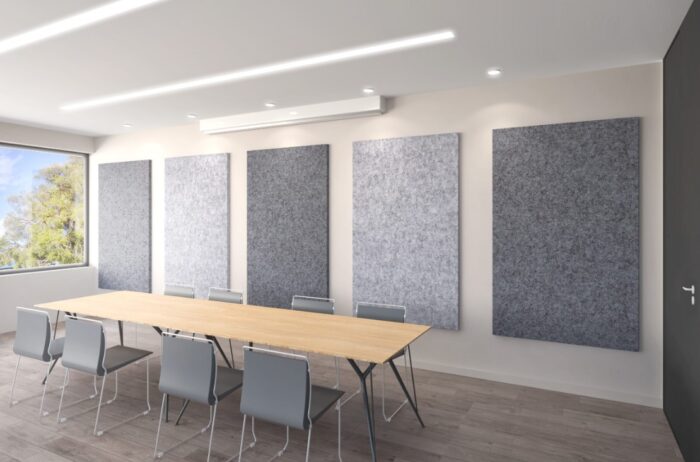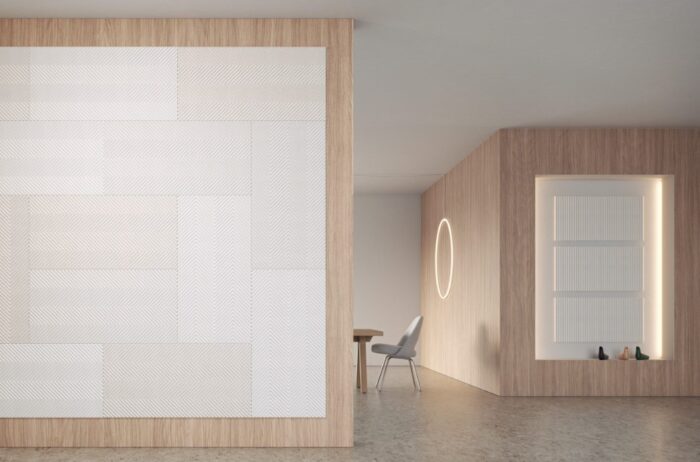
An acoustic panel is a type of wall panel used to reduce sound reverberation and control sound within an indoor space. They are designed to absorb, diffuse, or block loud noises to create a comfortable environment for listening and communication
Acoustic panels typically consist of a panel frame, which can be made from wood, metal, or plastic materials and is usually covered with fabric or foam that helps absorb sound waves. The fabric material is often treated with fire retardant chemicals to ensure safety in the event of a fire. Acoustic panels come in different sizes and shapes depending on the requirements of the application. And may do some DIY acoustic panels if you want to be more creative.
The acoustic properties of these panels depend on their size and shape as well as the material they are made from; some materials such as concrete can be more effective at absorbing low-frequency sounds while other materials such as foam can be better at absorbing mid-range frequencies. To get optimal sound absorption, acoustic panels must be installed correctly according to building codes and regulations to ensure maximum effectiveness.
In this article, we will explore the various types of acoustic wall panels and discuss which type is best for your needs.
Benefits of Acoustic Panels for Walls

If you’ve ever been in a room that had poor acoustics, you know how difficult it can be to understand what others are saying. That’s why acoustic panels for walls are becoming increasingly popular. These panels help improve the sound quality of a space, making conversations and listening to music much more enjoyable. But what exactly are acoustic panels and what benefits do they offer?
Acoustic panels are large sheets of material designed to absorb sound waves to reduce reverberation and echo within a space. They come in a variety of materials such as foam, fiberglass, or even wood veneer depending on the desired look and purpose. Acoustic wall treatments typically consist of mounting these panels directly onto walls or ceilings using an adhesive backing or metal frames.
The primary benefit of installing acoustic wall treatments is improved sound quality within the room itself. By absorbing excess sound waves before they reach other surfaces in the room, acoustic panels can significantly reduce background noise levels and make conversations much easier to hear and understand without any additional volume adjustments needed from speakers or other audio equipment.
In addition, this also prevents excess noise from carrying into adjacent rooms as well as improving overall clarity for music listening experiences at home or in studios alike.
Types of Acoustic Panels for Walls

Acoustic panels are essential in any room where sound quality is important. Whether you’re recording music, hosting a podcast, or editing videos, acoustic panels are the best way to keep your space free from echo and reverb.
There are many different types of acoustic panels available on the market today, each offering its unique advantages.
Soft Acoustic Panels
These lightweight foam materials are generally used for absorbing low-frequency sound waves to reduce reverberation and echo in a room. Soft acoustic wall paneling can be composed of open-cell foam or fiberglass fabric wrapped around a core material such as plastic foam or fiberglass batting. They offer excellent absorption qualities at relatively low costs and come in standard sizes that fit most walls without requiring additional framing support.
Installation Tips for Acoustic Panels on Walls

Installing acoustic panels on your walls is a great way to reduce unwanted noise and improve sound quality in any room. Acoustic panels can be used in both commercial and residential applications, but proper installation is key to ensure that the panels will work as intended. Here are some tips to keep in mind when installing acoustic panels on walls:
Measure the Room
Before you purchase any acoustic paneling, it’s important to measure the room accurately so that you know how many panels are needed and where they should go. Make sure to take into account corners, shelves, windows, doorways, and other obstacles when measuring the space available for panel installation.
Prepare the Wall
Once you’ve purchased your acoustic panels, prepare the wall where they will be installed by cleaning it thoroughly with a damp cloth or sponge. Be sure that no nails or screws are sticking out of the wall before proceeding with installation as this can create air pockets that could disrupt sound waves from reaching their target audience effectively.

Conclusion
Acoustic panels for walls are an effective way to reduce unwanted noise in any room. They are easy to install and can be used in a variety of different settings. They provide excellent sound absorption and insulation while also enhancing the aesthetics of a space. Acoustic panels are a great solution for anyone looking to improve the acoustics of their home or office.








